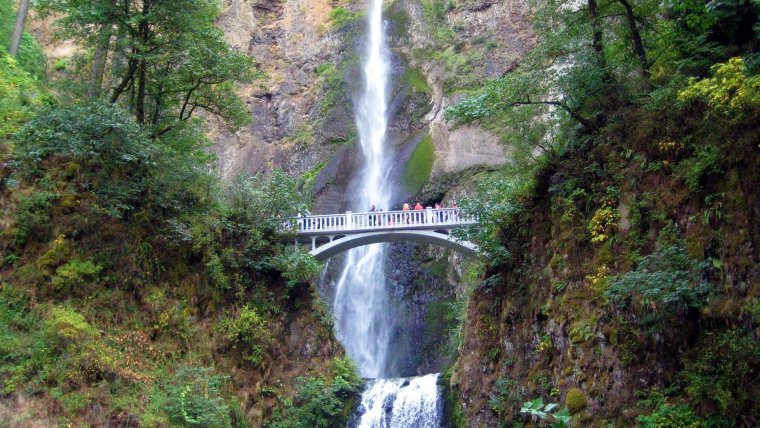
Majestic, cascading water over a precipice or steep incline. It’s not hard to imagine why people and photographers alike are drawn to waterfalls. These marvelous features of nature are always a treat to see in real life. How do we capture that same beauty in the camera, though? And what are the main challenges that a photographer must overcome when shooting waterfalls?
This article will discuss the following guidelines and options of waterfall photography:
Table of Contents
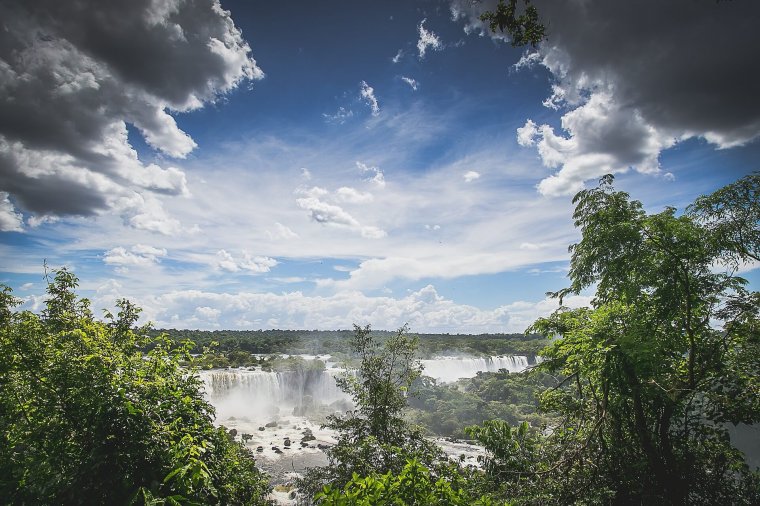
Framing is a great compositional tool for any photographer to have in their toolkit. In photography, framing refers to using elements in the environment – whether structural, light or through other means, in order to bring focus to the subject. In waterfall photography, there is very often a natural element in the area that can be used to frame your photo! Usually, there are lots of trees in the environment surrounding waterfalls. In the photo above, we see that in addition to using the trees as a frame, the photographer angled the camera upward to even use the clouds as part of the natural frame! This helps the viewer’s eyes focus on the waterfall itself. Next time you are composing a waterfall image, why not look for some natural elements to use as a frame?
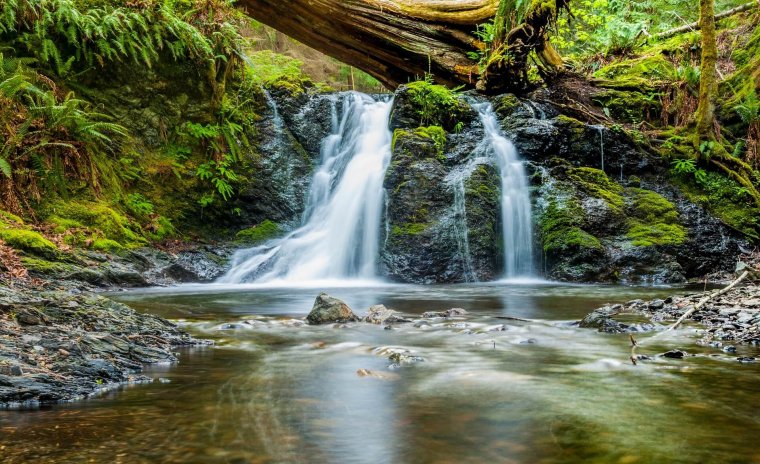
The next common hurdle that you will encounter with waterfall photography is trying to decide whether to shoot using a slow shutter speed to capture the silky smoothness of the water flowing, or using a fast shutter speed to capture the raging water as it looks in real life. Well, the great news is that you don’t have to choose! With subjects that are natural, your only limitation is time and light. Shoot using a wide range of shutter speeds, and then select the best out of them when you have time to review the photos.
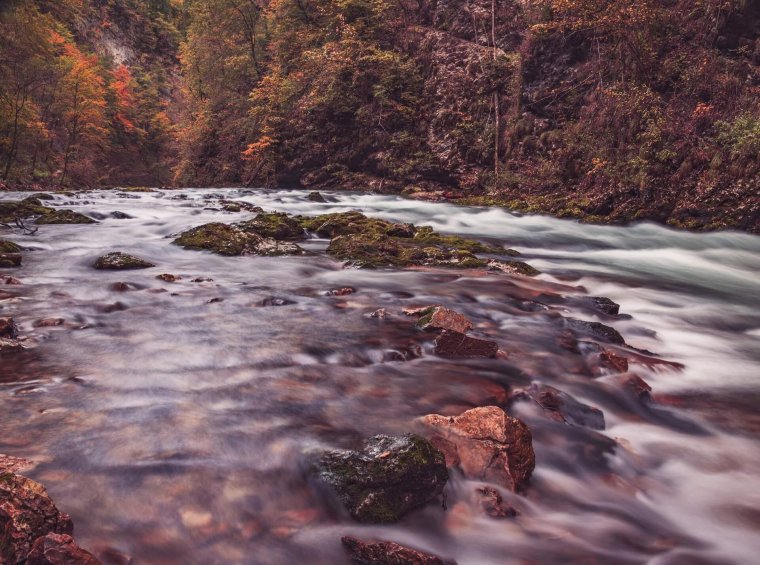
A good range of slow shutter speeds to try with a waterfall would be 1/4 sec. to 2-3 seconds. Taking a range of photos with 1/3 or 1/2 stop in between those speeds is the safest option. Every waterfall is unique, and so there is no magic number when it comes to the perfect shutter speed. Also, make sure you have the right equipment – a strong, stable tripod that is able to support your camera is vital. In addition, set your camera’s mode dial to Tv (Time Value) if you have that function, in order to easily set the shutter speed. One last thing to keep in mind with any slow shutter speed photo is that camera shake must be prevented at all costs, so setting a self-timer on the camera or using a remote shutter release is pertinent to a blur-free photo.
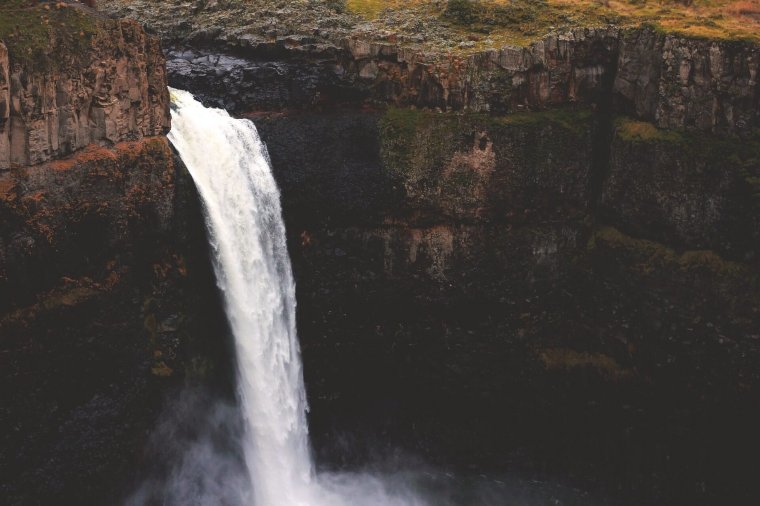
A fast shutter speed can also look great for waterfall photography! With a fast shutter speed, oftentimes a tripod is not necessary. Also, the photo is much more realistic and the viewer can almost hear the water crashing down. The mist that rises from the water helps the viewer sense the strength of the waterfall. As a general rule of thumb, a fast shutter speed can be a great option for waterfalls that are relatively tall.
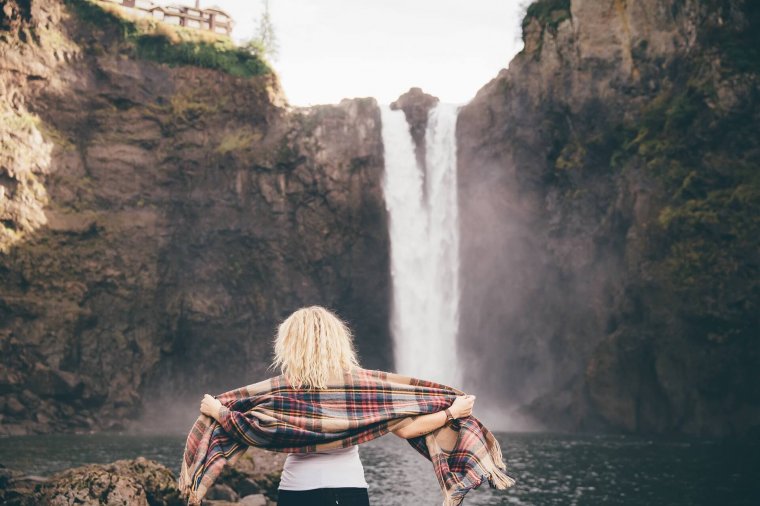
Perspective is important in any photo but especially important in landscape photos. If the viewer doesn’t know what the sense of scale in a photo is, then it’s like the photo is missing a puzzle piece. They won’t be satisfied until they find it. Fortunately for photographers, there’s a very simple solution. Everyone knows the size of a human being. Why not use include them in your waterfall photos in order to add a sense of scale? It’s not always possible to find a willing subject, but sometimes you can include candid photos of people farther away. It’ll have the same effect!
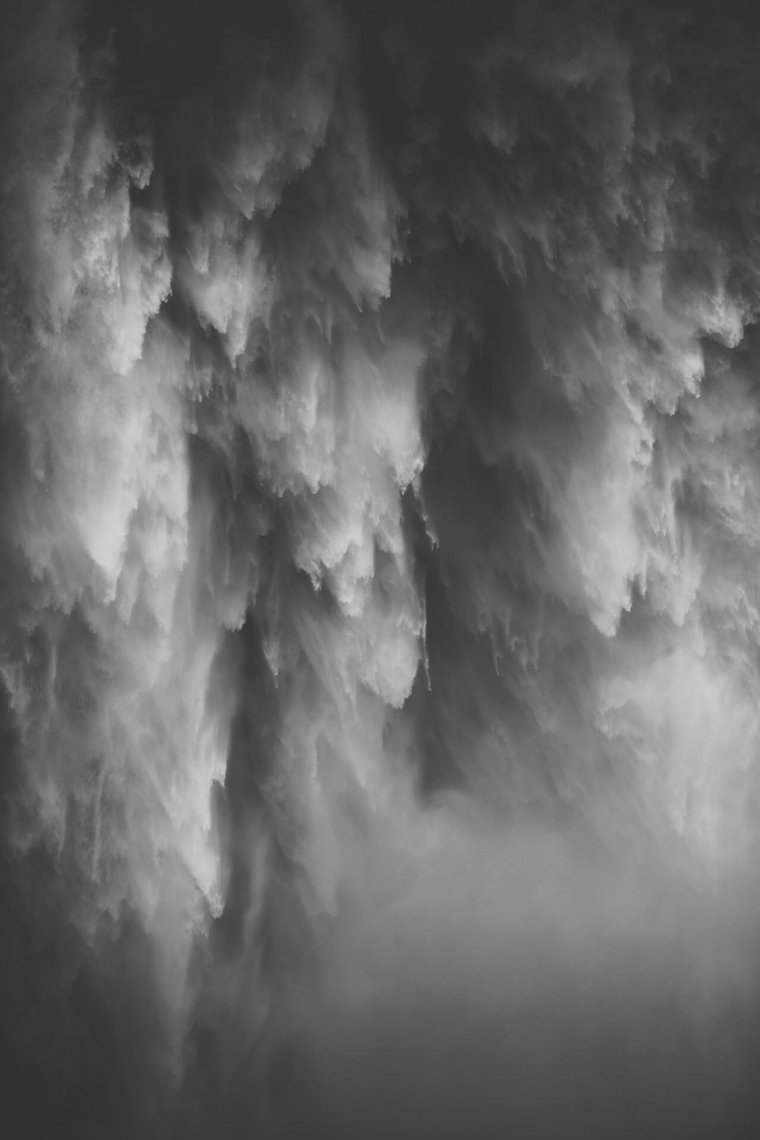
As with all black and white photos – the texture, shape, and form are emphasized. In this close-up of a waterfall, the cascading water makes stalactite-like shapes as it rushes towards the ground. The uniqueness of this collection of shapes and figures are made to be the focus of the photo by removing all color. A black and white photo is also timeless and not connected to any particular time period. Try making a few of your waterfall photos in your collection black and white – you may like what you see!
Comments (0)
There are no comments yet.